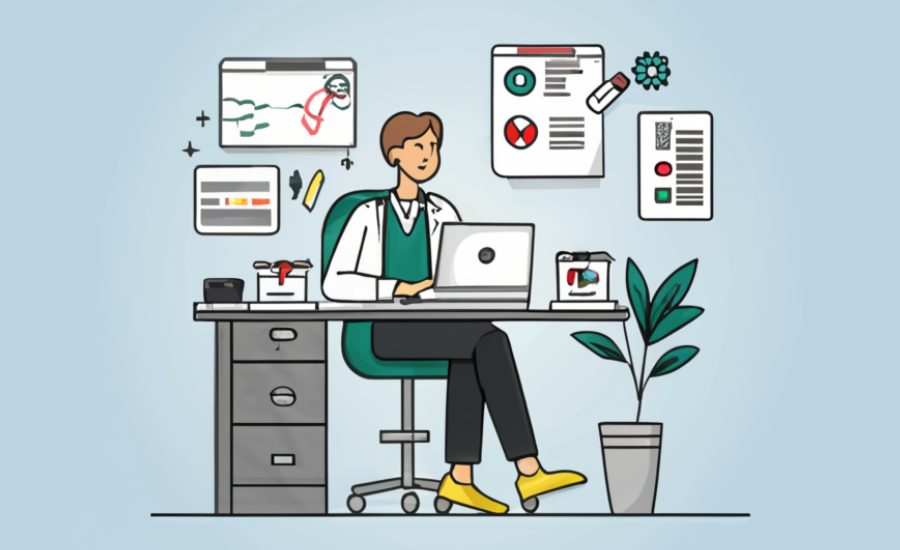Actual or Rounded ML Gallon for Naplex & More
Introduction
To become a licensed pharmacist in the United States, earning a pharmacy degree is just the beginning. One of the crucial steps in the process is passing the North American Pharmacist Licensure Examination® (NAPLEX®), which is overseen by the National Association of Boards of Pharmacy® (NABP®). The NAPLEX® is designed to assess a candidate’s proficiency in general pharmacy knowledge and serves as a key element of the overall licensure procedure. In this article, we will explore what the NAPLEX® entails and offer guidance on how to best prepare for the exam.
The actual or rounded ml gallon for naplex is a comprehensive test that evaluates a candidate’s understanding of various topics relevant to pharmacy practice. It includes questions on areas such as pharmacology, therapeutic knowledge, patient safety, and the management of medications. The exam also covers the practical application of pharmaceutical concepts, including drug interactions, dosage calculations, and pharmacy law. Given the broad scope of content, thorough preparation is essential to ensure success.
Preparing for the NAPLEX® involves a combination of structured study and practical experience. Most candidates begin by reviewing their pharmacy coursework to refresh their knowledge of key concepts. Many also turn to study materials specifically designed for the NAPLEX®, such as review books, practice exams, and online resources. These materials can help reinforce knowledge, improve test-taking skills, and identify areas where additional study may be needed.
In addition to reviewing content, it’s important to familiarize yourself with the exam format and structure. The NAPLEX® consists of multiple-choice questions, with some requiring detailed analysis and problem-solving. Taking practice tests under timed conditions can help simulate the real exam experience and improve time management during the actual test.
It’s also essential to maintain a healthy study routine, including taking breaks and staying consistent in your efforts. Preparing for the NAPLEX® is a marathon, not a sprint, and balancing study with self-care is important to avoid burnout.
In summary, passing the NAPLEX® is a crucial milestone in becoming a licensed pharmacist in the U.S. By reviewing your pharmacy education, using targeted study resources, and practicing exam strategies, you can improve your chances of success. With dedication and thorough preparation, you’ll be well on your way to a fulfilling career in pharmacy.
Why Take NAPLEX and Who Can Take It?

To reap a pharmacy license inside the United States, passing the North American Pharmacist Licensure Examination® (NAPLEX®) is an crucial step. Graduates must have finished their schooling at an authorized pharmacy school, identified by using the Accreditation Council for Pharmacy Education (ACPE), or have earned the Foreign Pharmacy Graduate Examination Committee® (FPGEC®) Certification if they skilled overseas. Additionally, candidates must meet the specific eligibility requirements of the kingdom or jurisdiction wherein they intend to exercise.
What to Expect on the NAPLEX Exam
The NAPLEX is designed to assess whether applicants own the vital know-how, abilties, and medical judgment required to exercise pharmacy thoroughly and successfully. The exam is structured primarily based on competency statements that outline the important thing areas of cognizance.There are six primary categories tested, each with its specific weight in the exam:
Area 1: Data Interpretation and Assessment – ~18%
Area 2: Drug Characteristics – ~14%
Area 3: Treatment Plan Development and Management – ~35%
Area 4: Pharmaceutical Calculations – ~14%
Area 5: Drug Dispensation and Management – ~11%
Area 6: Medication Safety and Quality Systems – ~7%
These areas comprehensively cover the broad scope of pharmacy practice, from assessing patient data to ensuring medication safety. As such, a candidate’s understanding of both theoretical knowledge and practical application in various pharmacy settings is thoroughly evaluated.
How Challenging is the NAPLEX?
The trouble of the NAPLEX examination varies from candidate to candidate, relying on their draw close of the challenge depend. The examination spans the entire pharmacy curriculum, which include pharmacology, pharmacotherapy, and affected person management, which can be challenging for a few college students, mainly with regards to reading large amounts of fabric. While a few may discover the concepts smooth to understand, preparing for the examination may be the most challenging element.
The pass rate for the NAPLEX has seen some decline in latest years. For example, in 2021, the bypass price for first-time applicants from ACPE-authorized faculties turned into 84%, at the same time as the overall pass fee turned into barely lower at 82%.
NAPLEX Exam Structure and Timing

The NAPLEX is administered via computer at a delegated trying out center and lasts about six hours. The exam consists of 225 questions, with simplest 2 hundred contributing on your score. The last 25 are experimental questions and do no longer have an effect on the very last end result, but applicants will not understand which ones are experimental. The majority of the questions are scenario-primarily based, requiring you to research affected person profiles or medical facts. Candidates ought to carefully review the statistics earlier than answering.
During the examination, you’re allowed optionally available breaks, every lasting 10 mins. These breaks are offered at scheduled durations, and the pc will notify you while it’s time to take them.
Being well-prepared is prime to succeeding inside the NAPLEX. Understanding the structure, varieties of questions, and areas tested will assist you manage your time successfully and approach the exam with self belief.
NAPLEX Background
When preparing for the NAPLEX examination, it’s critical to get entry to dependable and updated sources. For the maximum correct details on registration, charges, and check availability, the excellent source is the reliable NABP website. Rather than going over background information, it’s more efficient to immediately go to the NAPLEX web page on the National Association of Boards of Pharmacy (NABP) internet site.
NAPLEX Registration Bulletin
One of the maximum precious assets available is the NAPLEX Registration Bulletin, which may be discovered at the NABP website. Since this bulletin is up to date often, it’s important to test the internet site for the present day version in preference to relying on previous hyperlinks. The bulletin offers a detailed breakdown of what will be tested at the examination, overlaying critical abilties and the structure of the check.
Competencies and Sample Questions

The skills outlined inside the registration bulletin explain what topics and competencies are assessed at some point of the NAPLEX exam. It’s important to review these competencies very well to ensure you’re focusing on the right areas in your observe sessions. The bulletin additionally includes pattern questions, that are in particular beneficial for information the exam layout and trying out your knowledge.
Important Test Day Information
The registration bulletin also includes sensible statistics that you’ll need for test day. This phase covers the requirements for what to bring to the check center, inclusive of perfect types of identification. While those information might also appear minor, they’re critical to keep away from any problems or delays on examination day.
FAQs
1. What is the NAPLEX exam?
The NAPLEX (North American Pharmacist Licensure Examination) is a comprehensive test that evaluates your knowledge and skills in pharmacy practice. It is a requirement to become a licensed pharmacist in the United States. The exam tests various topics such as pharmacology, therapeutic knowledge, patient safety, drug interactions, dosage calculations, and pharmacy law.
2. Who is eligible to take the NAPLEX?
To be eligible for the NAPLEX, you must have graduated from an accredited pharmacy school or hold the Foreign Pharmacy Graduate Examination Committee (FPGEC) certification if you studied overseas. You also need to meet the specific eligibility requirements of the state where you plan to practice.
3. How is the NAPLEX exam structured?
The NAPLEX consists of 225 multiple-choice questions, but only 200 of them are scored. The other 25 questions are experimental and do not affect your score. The exam lasts approximately six hours and is administered on a computer. It focuses on real-world scenarios and assesses your ability to apply pharmaceutical knowledge.
4. What topics are covered in the NAPLEX?
The NAPLEX covers six main areas of pharmacy practice, including:
- Data Interpretation and Assessment (~18%)
- Drug Characteristics (~14%)
- Treatment Plan Development and Management (~35%)
- Pharmaceutical Calculations (~14%)
- Drug Dispensation and Management (~11%)
- Medication Safety and Quality Systems (~7%)
5. How difficult is the NAPLEX exam?
The difficulty level of the NAPLEX varies depending on your understanding of the material. It covers a broad range of topics from the entire pharmacy curriculum, which can make it challenging for some. While some areas may seem straightforward, managing all the information and preparing for the test can be the toughest part. The pass rate for first-time candidates in 2021 was 84%, and the overall pass rate was 82%.
6. How long is the NAPLEX exam, and how is it formatted?
The NAPLEX exam is six hours long, with 225 questions. However, only 200 questions contribute to your score, and the remaining 25 are experimental. The exam is computer-based and primarily consists of scenario-based questions where you must analyze patient data and make decisions. Breaks are available during the test, and each break lasts 10 minutes.
7. What resources are available to help me prepare for the NAPLEX?
To prepare for the NAPLEX, it’s essential to review your pharmacy coursework, use study materials like review books, practice exams, and online resources, and practice taking timed tests. You can also check the NAPLEX Registration Bulletin available on the NABP website, which provides detailed information on exam content and sample questions.
8. What should I bring to the test center on exam day?
The NAPLEX Registration Bulletin also outlines the items you need to bring to the test center. This typically includes valid identification (such as a driver’s license or passport) and any other required documents. It’s important to double-check these requirements to avoid delays or complications on exam day.
9. How can I improve my chances of passing the NAPLEX?
The best way to improve your chances of success is through thorough preparation. This includes reviewing key concepts, practicing with sample questions, and familiarizing yourself with the test format. Consistency in studying, managing your time effectively, and taking care of your well-being during the process are all critical factors in ensuring success.
10. How do I register for the NAPLEX?
To register for the NAPLEX, visit the NABP website, where you can find the most up-to-date information about registration procedures, fees, and scheduling. You can also find details about the registration deadlines and other important exam information on the website.
Final Words
An essential stage in becoming a licensed pharmacist in the United States is passing the NAPLEX, which assesses your thorough understanding and practical pharmacy skills. It’s crucial to fully prepare for the test by going over significant ideas again, using focused study guides, and being acquainted with the format of the test. You can approach the examination more confidently if you are aware of the various topics it covers, such as medication properties, treatment strategies, and pharmaceutical computations. You can improve your chances of passing the NAPLEX and beginning your career as a chemist by being committed and preparing systematically.
For more Information About Anything visit our site Francher Way




